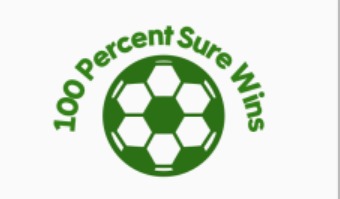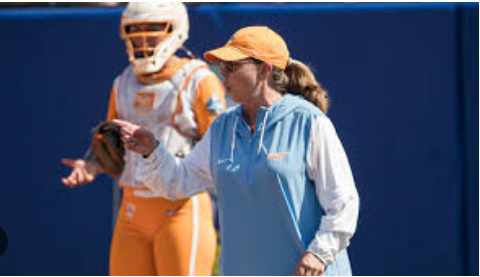NCAA Softball Transfer Portal Tampering: Rules, Controversies, and Consequences
The NCAA softball transfer portal tampering issue has become one of the most controversial and widely discussed topics in collegiate athletics. With the rise in athlete mobility and the liberalization of transfer rules, concerns over illegal recruitment practices have taken center stage—especially in NCAA Division I softball.
In this comprehensive guide, we’ll unpack what transfer portal tampering in NCAA softball means, explore recent cases, understand NCAA regulations, and examine how schools and players are affected. If you’re a coach, player, parent, or fan, this article will serve as your definitive source.
📊 Quick Facts Table: NCAA Softball Transfer Portal Tampering
| Feature | Details |
|---|---|
| Main Concern | Illegal contact with athletes before they enter the transfer portal |
| Governed by | NCAA |
| Applies To | NCAA Division I, II, III softball programs |
| Primary Penalty | Fines, probation, postseason bans, and coach suspensions |
| Monitoring Tool | NCAA Transfer Portal |
| Current Trend | Increasing cases in softball and women’s sports |
| Synonyms | Transfer manipulation, illegal recruitment |
| Common Violators | Coaches, boosters, intermediaries |
🚨 What is NCAA Softball Transfer Portal Tampering?
The NCAA softball transfer portal tampering refers to any unauthorized communication or recruitment efforts made by a coach, staff member, or affiliated party toward a student-athlete before that athlete officially enters the NCAA Transfer Portal.
🔍 A Brief Overview of the NCAA Transfer Portal
The NCAA Transfer Portal, introduced in 2018, was designed to give college athletes the freedom to explore transfer options without seeking permission from their current school. Once an athlete enters the portal, other institutions may legally initiate contact. However, tampering occurs when coaches or third parties attempt to influence players before they are in the portal, which is strictly prohibited.
🧩 How NCAA Softball Transfer Portal Tampering Happens
Tampering in softball typically unfolds in subtle yet damaging ways. Here are the most common methods:
1. Backchannel Communication
- Using former teammates, alumni, or “middlemen” to test a player’s interest.
2. Social Media Recruitment
- Subtle direct messages (DMs) or interactions on platforms like Instagram or X (formerly Twitter).
3. Implied Opportunities
- Whispered promises about scholarships, starting positions, or NIL (Name, Image, Likeness) deals without formal offers.
4. Intermediary Contacts
- High school coaches or travel ball instructors acting as liaisons.
These practices not only violate NCAA rules, but they also create unfair recruiting advantages, leading to mistrust among programs.
⚖️ NCAA Rules on Transfer Tampering in Softball
The NCAA has strict policies in place. The key tampering-related rule is:
Bylaw 13.1.1.3: Contact with Prospective Student-Athletes
“An institution shall not permit any staff member or booster to make contact with a student-athlete at another NCAA school unless the athlete has officially entered the NCAA Transfer Portal.”
Violations may include:
- Pre-portal conversations
- Influencing athlete decisions through third parties
- Offering inducements or NIL benefits
🛑 Penalties for Tampering
| Violation | Potential Penalty |
|---|---|
| First offense | Warning or public reprimand |
| Repeated violations | Fines, scholarship reductions, or postseason bans |
| Severe tampering | Coach suspension or employment termination |
🔥 Recent NCAA Softball Tampering Cases (2023–2025)
🧾 1. The Alabama–LSU Controversy (2024)
An assistant coach at LSU was rumored to have reached out to an Alabama pitcher prior to her portal entry. Although the NCAA found no conclusive evidence, the investigation spurred stricter enforcement guidelines.
📣 2. UCLA Star Transfer Rumors (2025)
A Pac-12 team was accused of tampering after a top UCLA outfielder transferred under suspicious circumstances. Anonymous sources suggested NIL incentives were floated before her portal declaration.
🚨 3. Florida State Inquiry (2023)
Florida State faced an internal investigation when boosters were linked to text messages discussing potential transfers. The school self-reported to avoid harsher penalties.
These cases underscore the growing scrutiny and pressure on compliance departments across NCAA softball programs.
🧠 Why Tampering Is More Common in Softball Today
Several factors have contributed to the rise of transfer portal tampering in NCAA softball:
- Athlete Empowerment: The NCAA’s relaxed transfer rules mean athletes now have more freedom, making them frequent targets.
- NIL Money: Name, Image, and Likeness deals create new incentives for athletes to switch schools.
- Competitive Balance: Top programs seek to plug gaps instantly with experienced transfer players.
- Limited Roster Spots: With only 12 scholarships available per team (in Division I), coaches often poach seasoned players over developing talent.
🔄 How Schools Can Prevent Transfer Portal Tampering
Preventing tampering requires a mix of vigilance, education, and compliance.
✅ Best Practices:
- Compliance Training: Coaches and staff must undergo annual training on NCAA transfer rules.
- Clear Communication: Institutions should set boundaries about contact with athletes at other schools.
- Self-Reporting: If tampering is suspected, self-reporting often mitigates harsh NCAA sanctions.
- Monitor Boosters: Schools must remind alumni and supporters of their limited role in recruiting.
🎓 Impact on Student-Athletes
While some players benefit from a fresh start, many suffer from:
- Pressure to leave teams before they’re ready
- False promises that never materialize
- Mental health issues stemming from instability
- Loss of eligibility if protocol isn’t followed
It’s crucial to protect athletes from being exploited by unethical recruitment tactics.
🧾 NCAA Softball Transfer Portal Stats (2024–2025)
| Metric | Value |
|---|---|
| Total portal entries (2024) | 780+ |
| % increase from 2023 | 19% |
| Average time in portal | 21 days |
| Transfers to Power 5 schools | 35% |
| Self-reported tampering cases | 12 |
| Confirmed NCAA violations | 5 |
🌍 Tampering Rules: NCAA vs Other Organizations
Unlike the NCAA, other athletic bodies like NAIA and NJCAA have more lenient rules. This leads some athletes to consider transferring out of NCAA programs entirely to avoid restrictions.
However, the NCAA remains the gold standard for compliance—and thus the focal point of tampering crackdowns.
💬 Expert Insights on NCAA Softball Transfer Portal Tampering
“Tampering creates distrust among coaches and damages the student-athlete experience. The NCAA must enforce penalties to maintain integrity.”
— Karen Weekly, Head Coach, Tennessee Softball
“We need more transparency and education for both athletes and parents. Many don’t even know the rules until it’s too late.”
— Brenda Frese, NCAA Compliance Consultant
📚 FAQs: NCAA Softball Transfer Portal Tampering
❓ What is NCAA softball transfer portal tampering?
Tampering refers to illegal contact or recruitment attempts made toward a softball athlete before they enter the official NCAA Transfer Portal.
❓ Is it legal to talk to an athlete before they’re in the portal?
No. NCAA bylaws strictly prohibit contact with student-athletes not yet in the portal.
❓ What happens if a school is caught tampering?
The school may face sanctions like fines, loss of scholarships, or postseason bans. The involved coach could be suspended or fired.
❓ How can athletes protect themselves?
Athletes should know their rights, report suspicious contact to their compliance office, and avoid engaging with unauthorized recruiters.
❓ Does NIL play a role in tampering?
Yes. NIL opportunities can be used as illegal inducements before a player enters the portal, which is a violation of NCAA rules.
❓ Are coaches the only ones who tamper?
No. Boosters, alumni, or third-party intermediaries can also be involved in tampering.
🏁 Conclusion: Protecting Integrity in NCAA Softball
The NCAA softball transfer portal tampering issue is a growing threat to fair play, equity, and student-athlete welfare. With more players leveraging the portal for new opportunities, ethical lines are being tested—sometimes crossed.
Whether you’re a coach, athlete, parent, or fan, understanding the risks and regulations around tampering is crucial. Only through transparency, education, and enforcement can NCAA softball remain a fair and competitive field for all.
Related Links:
- National Collegiate Athletic Association – Wikipedia
- NCAA Transfer Portal Home
- Division I Manual – NCAA Bylaws

